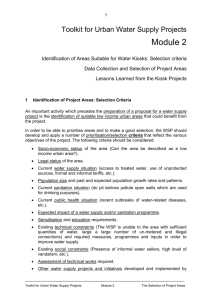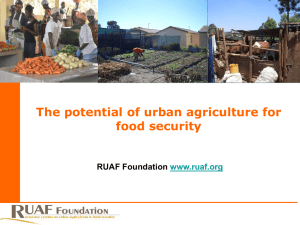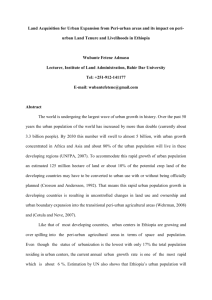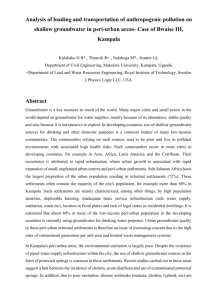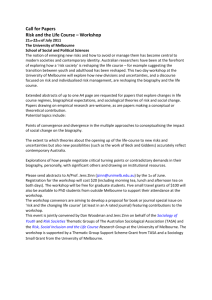Peri-Urban Fact Sheet (DOC - 19KB)
advertisement
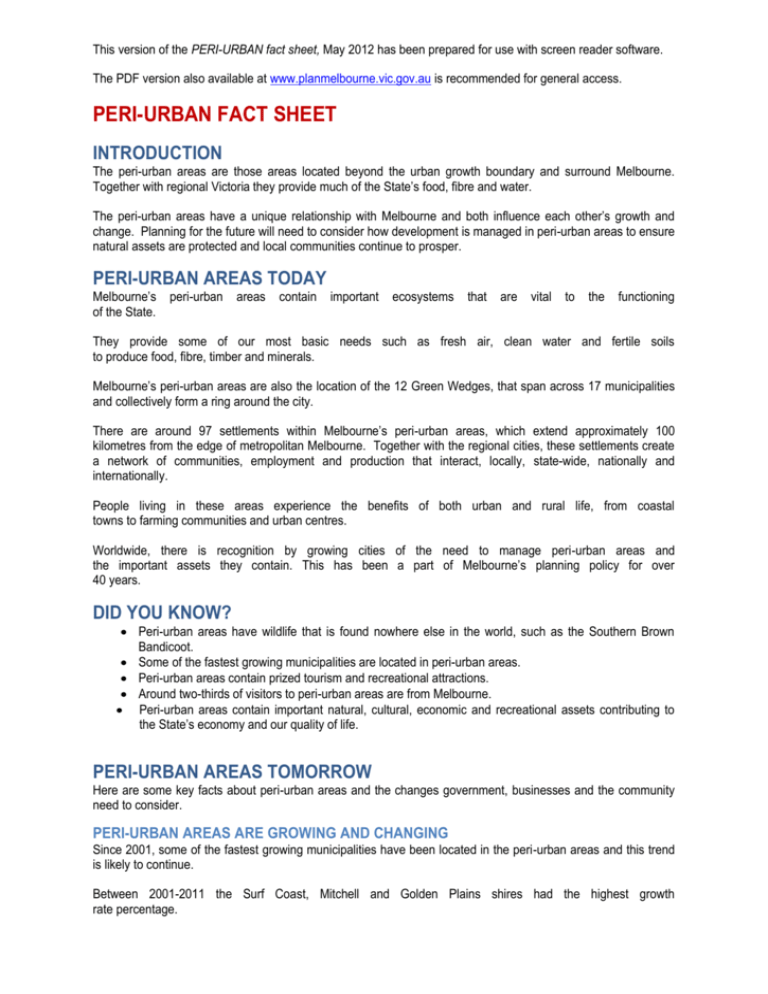
This version of the PERI-URBAN fact sheet, May 2012 has been prepared for use with screen reader software. The PDF version also available at www.planmelbourne.vic.gov.au is recommended for general access. PERI-URBAN FACT SHEET INTRODUCTION The peri-urban areas are those areas located beyond the urban growth boundary and surround Melbourne. Together with regional Victoria they provide much of the State’s food, fibre and water. The peri-urban areas have a unique relationship with Melbourne and both influence each other’s growth and change. Planning for the future will need to consider how development is managed in peri-urban areas to ensure natural assets are protected and local communities continue to prosper. PERI-URBAN AREAS TODAY Melbourne’s peri-urban areas contain important ecosystems that are vital to the functioning of the State. They provide some of our most basic needs such as fresh air, clean water and fertile soils to produce food, fibre, timber and minerals. Melbourne’s peri-urban areas are also the location of the 12 Green Wedges, that span across 17 municipalities and collectively form a ring around the city. There are around 97 settlements within Melbourne’s peri-urban areas, which extend approximately 100 kilometres from the edge of metropolitan Melbourne. Together with the regional cities, these settlements create a network of communities, employment and production that interact, locally, state-wide, nationally and internationally. People living in these areas experience the benefits of both urban and rural life, from coastal towns to farming communities and urban centres. Worldwide, there is recognition by growing cities of the need to manage peri-urban areas and the important assets they contain. This has been a part of Melbourne’s planning policy for over 40 years. DID YOU KNOW? Peri-urban areas have wildlife that is found nowhere else in the world, such as the Southern Brown Bandicoot. Some of the fastest growing municipalities are located in peri-urban areas. Peri-urban areas contain prized tourism and recreational attractions. Around two-thirds of visitors to peri-urban areas are from Melbourne. Peri-urban areas contain important natural, cultural, economic and recreational assets contributing to the State’s economy and our quality of life. PERI-URBAN AREAS TOMORROW Here are some key facts about peri-urban areas and the changes government, businesses and the community need to consider. PERI-URBAN AREAS ARE GROWING AND CHANGING Since 2001, some of the fastest growing municipalities have been located in the peri-urban areas and this trend is likely to continue. Between 2001-2011 the Surf Coast, Mitchell and Golden Plains shires had the highest growth rate percentage. Improved access has added to the appeal of peri-urban areas as a place to live or have a holiday home and a number of housing developments have occurred in the rural peri-urban landscape. Settlements within these natural landscapes can present risks from bushfires, sea-level rise and flooding. Planning for the future will need to consider the impact of these new developments across the peri-urban landscape, particularly on the environment, farming and infrastructure that supports local communities. CLEAN WATER Many of Victoria’s water catchments are located in the peri-urban areas. The filtering action of the forested surrounds of our reservoirs, especially in the Yarra Ranges and catchment areas, helps ensure clean water for a growing population. FRESH AIR Melbourne’s peri-urban areas and the green wedges are often referred to as the ‘lungs of the city’ contributing fresh air and helping to regulate the climate. Forests and other vegetation in the peri-urban areas absorb carbon dioxide and replenish oxygen in the atmosphere. BIODIVERSITY Biodiversity, such as plants and wildlife, underpin ecosystems and the services they provide, such as purifying water and regulating climates. Many animals have critical habitats within Melbourne’s peri-urban areas such as the Southern Brown Bandicoot. The peri-urban areas contain three internationally significant Ramsar listed wetland areas - Western Port, Edithvale-Seaford Wetlands and Port Phillip Bay (Western Shoreline) and the Bellarine Peninsula. LANDSCAPES AND OPEN SPACE The peri-urban areas are home to important landscape features including large areas of grasslands, wetlands, forests and national parks, such as those found in the Yarra Ranges and the Lerderderg State Park. NATURAL AND CULTURAL HERITAGE In rural areas there are still many historic townships, farms, cattle runs and pioneer homes. The traditional lands of the Kulin People in the south central region of Victoria still hold extensive evidence of Kulin communities. FOOD AND FIBRE Melbourne’s peri-urban areas contribute significantly to agricultural production. The Port Phillip and Western Port area around Melbourne is the second highest producer of agricultural products per hectare in Victoria, with agricultural output per hectare approximately four times the State average. INFRASTRUCTURE Important infrastructure assets are located in the peri-urban areas, including road and rail corridors, essential landfills, resource recovery and processing facilities. The Western Treatment Plant treats around 50 percent of Melbourne’s sewage and the Eastern Treatment Plant treats around 40 percent – both of which are located in Green Wedge areas. TOURISM AND RECREATION Tourism within peri-urban areas is continuing to grow and 4,362 tourism businesses have been registered. Many attractions are within a two hour journey from Melbourne and provide day trips for Melburnians and visitors from interstate and overseas. Around two-thirds of visitors to the peri-urban areas come from Melbourne. HAVE YOUR SAY We are seeking your thoughts and ideas on Melbourne’s future. Join our online forums to discuss: What do you think the priority should be when planning for Melbourne’s peri-urban areas - ensuring development is managed and natural assets are protected? Graphic icons showing links to social media and communication tools – Twitter is #planmelbourne Internet website is www.planmelbourne.vic.gov.au Email to planmelbourne@dpcd.vic.gov.au Subscribe to the newsletter
